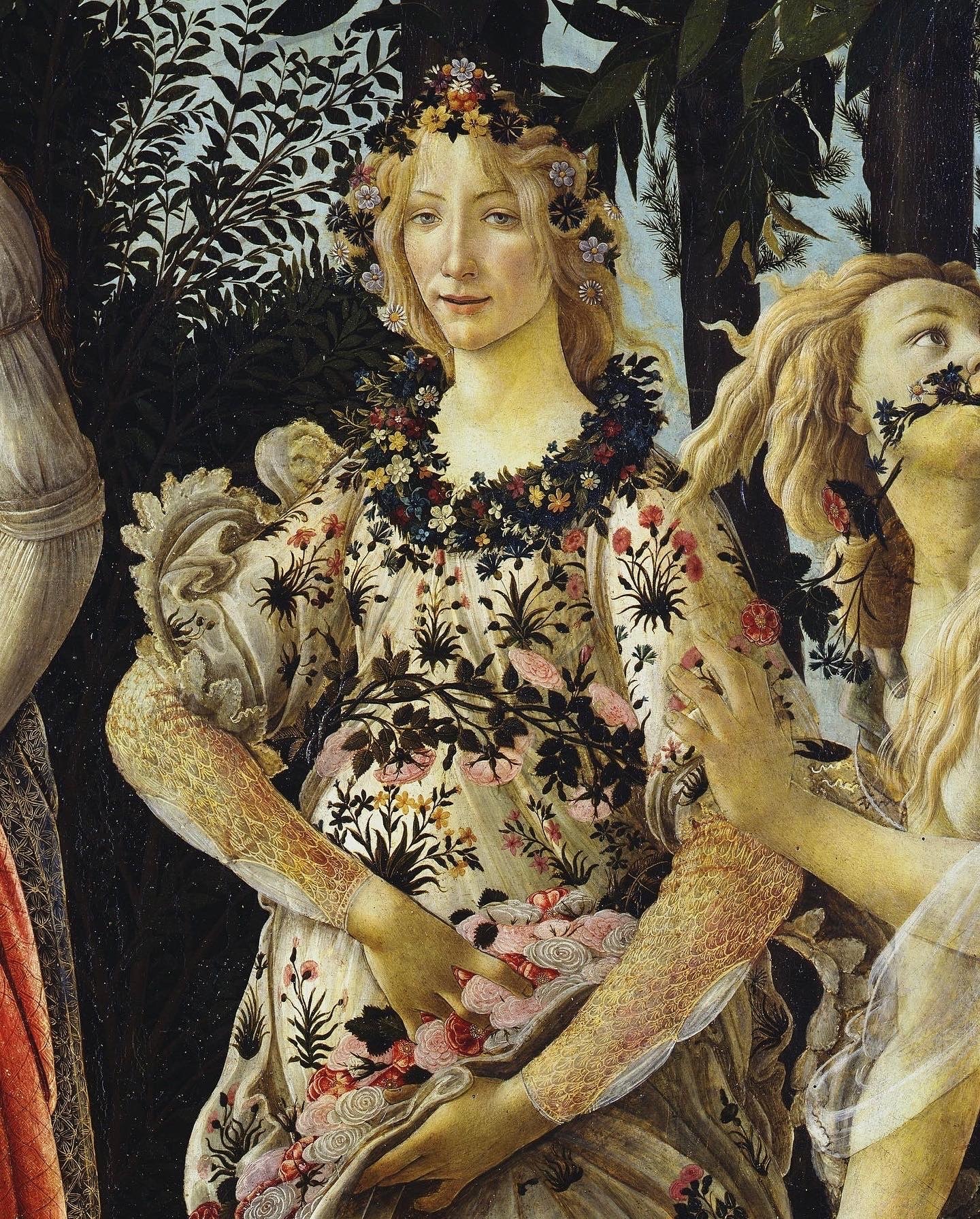
Picture found here.



Picture found here.

Picture found here.

Picture found here.

Picture found here.


Picture found here.
“I’d sleep another hundred years,
O love, for such another kiss;”
“O wake forever, love,” she hears,
“O love, ’t was such as this and this.”
…..
“O eyes long laid in happy sleep!”
“O happy sleep that lightly fled!”
“O happy kiss, that woke thy sleep!”
“O love, thy kiss would wake the dead!”
(Lord Tennyson, The Day-Dream)
 Carl Krenek (1880-1948), A Fairy Tale Scene – Sleeping Beauty, n.d.
Carl Krenek (1880-1948), A Fairy Tale Scene – Sleeping Beauty, n.d.
“In the topmost bedchamber of the house he found her. He had stepped over sleeping chambermaids and valets, and, breathing the dust and damp of the place, he finally stood in the door of her sanctuary. Her flaxen hair lay long and straight over the deep green velvet of her bed, and her dress in loose folds revealed the rounded breasts and limbs of a young woman. He opened the shuttered windows. The sunlight flooded down on her. And approaching her, he gave a soft gasp as he touched her cheek, and her teeth through her parted lips, and then her tender rounded eyelids. Her face was perfect to him…”
(Anne Rice, Sleeping Beauty)
French Symbolist poet Stéphane Mallarmé said that “To define is to kill. To suggest is to create”, and even before him, the seventeenth century Japanese poet Matsuo Basho wrote that “a poem that suggests 70-80 percent of its subject may be good, but a poem that only suggests 50-60 percent of the subject will always retain its intrigue”. This way of looking at things stuck with me and, suddenly, while looking at this painting by Carl Krenek and wondering why is it that I love it so much, it dawned on me… The reason for my immense appreciation of Carl Krenek’s painting “A Fairy Tale Scene – Sleeping Beauty” is because of its deliberate vagueness.
I have seen many nineteenth and early twentieth century illustrations of this famous fairy tale, but this one strikes me as the most original and perhaps also the most vibrant and flowery one as well. Instead of boring us with architectural details of the chamber where the Sleeping Beauty is sleeping in her bed, and painting all her entourage and all the sleeping courtiers and what not, Krenek focuses on the bare essentials; the slumbering princess and the roses that have grown over her bed, which are the two main motives of the fairy tale and the most recognisable to our eyes. This instantly brings freshness and our eye is excited. This is not to say that Krenek wasn’t detailed in his approach, far from it. The scene is very detailed, but in areas where it matters. Just look at the meticulous way he had painted all the flowers and thorns and branches, how they fill the space beautifully and naturally.
Krenek certainly wasn’t vague when it came to depicting the roses; here is one roses, now you, my dear viewers, imagine the others. No, it seems he really put his heart into all these flowers and they look ever so cheerful and vibrant, from the delicate pink ones above the princess and the more richly coloured red, orange and yellow ones that are growing around her bed. There is little to be seen of the actual Sleeping Beauty; only her pale face with the peacefully closed eyes and her white dress. It seems the roses are more of a main character than she is. Otherwise, I may have preferred to see the princess painted in more details, her beauty more enchanced, but in this painting I find the whole vagueness just delightful and I don’t regret there not being more of a focus on the princess. In fact, our eye may be even more drawn to the princess precisely because we cannot see her clearly. They mystery is alluring.
Sleeping Beauty is perhaps my favourite fairy tale and there are so many ways to look at this story on a symbolic level. Is she really just a princess who fell asleep because of the evil witch, waiting for a kiss to awake her? The theme of awakening can be interpreted in many ways; these days the nature, kissed by spring, is waking up from a long slumber of winter, but also, it can symbolise the girl’s awakening and ripening into womanhood, after that fateful kiss, just as the main character Faustine in the French 1972 film “Faustine and the Beautiful Summer” says, after being kissed by a man for the first time, “With this kiss my life begins!”. Is it the kiss of the Prince which awakens the Sleeping Beauty’s dormant soul, or is a love arrow shot by Cupid from above?
And now, to end the post, here are some beautiful verses from Lord Tennyson’s poem “The Day-Dream”:
“And on her lover’s arm she leant,
And round her waist she felt it fold;
And far across the hills they went
In that new world which is the old.
Across the hills, and far away
Beyond their utmost purple rim,
And deep into the dying day,
The happy princess followed him.
“I’d sleep another hundred years,
O love, for such another kiss!”

Sleeping Beauty by the Brothers Grimm, illustrated by Heinrich Lefler. Part of a fairy tale calender published by Berger & Wirth, Leipzig, 1905
“O come! (…) The rose is full blown,
The riches of Flora are lavishly strown…”
 Sandro Botticelli, Primavera, tempera on panel, c.1482
Sandro Botticelli, Primavera, tempera on panel, c.1482
These days I was really enjoying Botticelli’s painting “Primavera”; and I took great delight in gazing at all the details and especially gazing at the figures of Flora and the nymph Chloris caught in the wicked embrace of the God Zephyr. This painting needs no introduction because it is so famous in the Western world, but I still felt the need to share its beauty here and to show my appreciation, or rather, adoration. Sandro Botticelli was one of the Medici family’s favourite painters at the time and this painting was probably painted for the occassion of the marriage of Lorenzo Medici’s cousin which took place in 1482 and that is the date usually asigned to the painting. The painting’s themes of love and new beginnings, tied with the arrival of spring, as personified by the Roman Goddess Flora, are fitting for such a happy occassion indeed.
The court poet of the Medici family, Angelo Poliziano, described the garden of Venus as a place of eternal spring and peace, and his descriptions may have served as an inspiration to Botticellli for this painting. As the title “Primavera” suggests, the painting shows the arrival of spring and the celebrations surrounding the event. The arrival of spring is the most joyous time of the year for me! Who would not wish to celebrate it!? For long winter months I yearn to see the flowers blooming, the weeping willows coming alive with many little leaves, the birds singing… It is natural then, that the arrival of spring and the entire season of spring is also tied with the season of love. The central figure in Botticelli’s painting is Venus, the Goddess of Love, in the company of of her son Amor who is flying above her with his love arrows, and the Three Graces, dressed in flimsy white dresses that reveal more than they conceal. Venus is in the centre of the composition but, compared to the other figures, she is standing more in the background, as if she is allowing the spring to come before her. In the far right corner is the God Mercury who is holding off a rainy cloud with his stick; nothing is allowed to disturb the idyll of the beautiful garden where orange trees are ripe with fruit and a sweet fragranace of flowers colours the air. The Roman poet Lucretius’ poetic work “De Rerum Natura” may have also served as an inspiration to Botticelli and indeed in some of the verses we find similarities:
“Spring-time and Venus come, and Venus’ boy,
The winged harbinger, steps on before…
Sprinkling the ways before them, filleth all
With colours and with odours excellent…”
It is as if Botticelli is describing these verses because most of the characters from the painting are here in the poem; the Venus and her ‘boy’, Zephyr and Flora. My favourite part of the painting is the right corner where we have an interesting motif of metamorphosis presented all in one painting, although it doesn’t happen at the same time. Zephyr, the God of Wind, is seen forcefully embracing the beautiful yet frightened nymph Chloris who then transforms into the Goddess Flora who is represented by the woman dressed in a long white gown decorated with little flowers, for she is the Goddess of spring. A woman touched by love becomes all flowery and spring-like; what a beautiful analogy! Here are more verses from Lucretius’s “De Rerum Natura”:
“For thee waters of the unvexed deep
Smile, and the hollows of the serene sky
Glow with diffused radiance for thee!
For soon as comes the springtime face of day,
And procreant gales blow from the West unbarred,
First fowls of air, smit to the heart by thee,
Foretoken thy approach, O thou Divine,
And leap the wild herds round the happy fields
Or swim the bounding torrents. Thus amain,
Seized with the spell, all creatures follow thee
Whithersoever thou walkest forth to lead,
And thence through seas and mountains and swift streams,
Through leafy homes of birds and greening plains,
Kindling the lure of love in every breast,
Thou bringest the eternal generations forth…”
This “transformation by love” that has happened between Zephyir and Flora is the most beautiful element of the painting for me. Also, I am really enjoying Flora’s fashion choice; the long white gown and flowers. Flora as imagined by Botticelli made me think of a few fashion pictures from the sixties and seventies, and also of the costume worn by the sweet Jane Birkin.




Jane Birkin in “Wonderwall” (dir. Joe Massot – 1968)

Detail

ELLE Magazine – July 7th 1975 Yves Saint Laurent and Liberty of London Photographed by Barry Lategan

Toni Frissell – Vogue (June 1967)